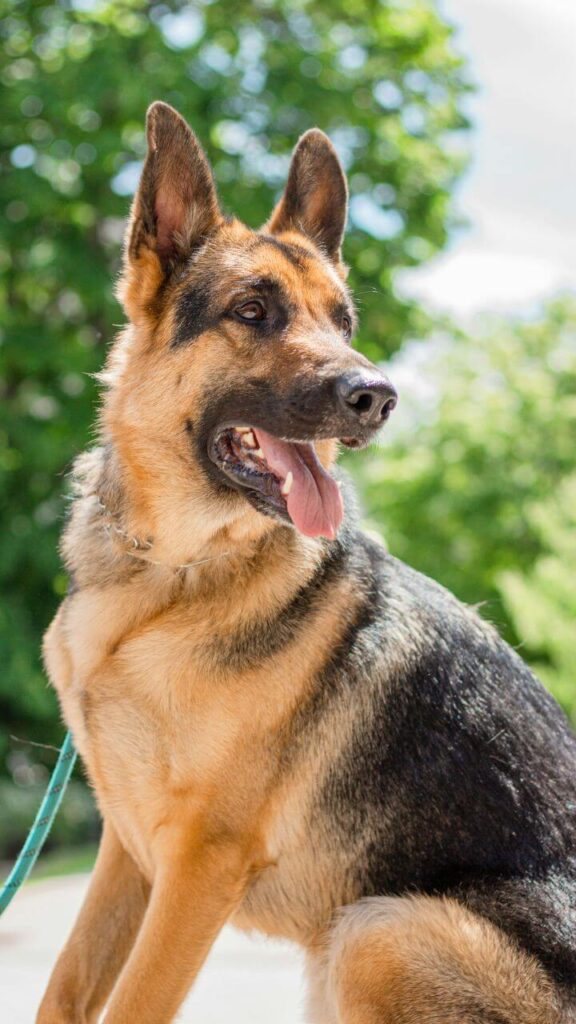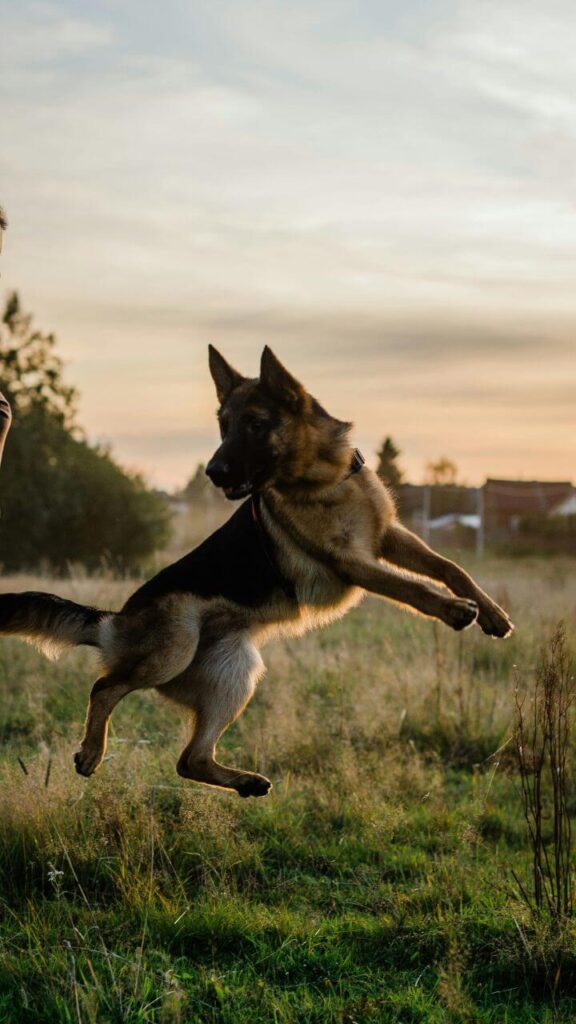German Shepherds are unique because they work so hard! Although they get their fame for their courage and devotion, they are quite sensitive. Are you eager to start teaching your German Shepherd and wondering “How to Train a German Shepherd”?
They even belong to the “working dog” category, which, I think, says something. It denotes that they are quick learners and simple to teach, like straightforward, loving direction, and love working in a team.
You’ll know the fastest and most effective techniques to teach your German Shepherd once you’ve finished reading this.
What Is the Amount of Time Required for Training?

Make sure you have at least 10 to 15 minutes every day to train your German shepherd.
To ensure that your German Shepherd is okay with hearing the same repetitive orders, you should break up the 10 to 15 minutes throughout the day.
Initially, we can aim for 5 sessions ranging about 5 minutes each.
Since your GSD is a working breed and some GSDs prefer training for longer, this guideline has certain exceptions. But begin with a brief session of no more than a few minutes, then progressively increase the length of each session.
Work on just one or two orders every session to ensure that your dog understands how to obey you.
If they are having trouble paying attention, you might add another instruction they are familiar with to keep the session upbeat and engaging.
Also Read:- Cumberland Sheepdog: The Obscure Extinct Dog Breed
Time Required to Train German Shepherd

If you have properly trained your German Shepherd puppy, they should be crate free, socialized and aware of a few basic instructions by the time they are 20 weeks old.
Usually, puppies get familiar with the crate in about a week, and experienced pet owners have reported that the gradual introduction of crate training was fruitful. But it can take months if your dog has a negative cage experience.
Remember that you might need to correct bad training or behavior issues if you have an adult Shepherd that has previously lived with another owner (or many dog owners).
You may come across some German Shepherds as extremely aggressive and hostile towards training, but with consistent training and positive reinforcement, your GSD gets trained to keep its composure, though sometimes it may require a few years to develop.
Unlike other German Shepherds, who can easily pick up the fundamentals of training and have excellent dog social experiences from the start,
When to Introduce Training?

At 6 to 7 weeks old, your puppy is capable of learning a variety of straightforward obedience instructions. However, you shouldn’t demand faultless obedience from a puppy this young. For a young puppy, a session of one minute is sufficient.
Your German Shepherd puppy should be able to sit, stay, and down after a few weeks, in addition to learning its name. Although it typically takes 6 to 8 weeks of effective dog training to develop a dependable off-leash come (recall).
When you gently attach the leash to your dog or puppy, utilize food rewards or play, and don’t pull your dog around the house or neighborhood on the leash, leash training goes relatively quickly.
Remember that training a German Shepherd needs you to take very tiny steps and build on your successes. When walking your GSD, you can’t just let your neighbor’s cat wander in front of you and expect them not to lunge if your dog isn’t too excited to overlook this important distraction.
How to ‘Correctly Train’ Your German Shepherd Dog.

The length of time it takes to train a German Shepherd depends on your level of consistency and how well you facilitate his understanding.
You should also think about your GSDs:
- age; if they are a confident adult or an active puppy;
- past training; Are you employing the best training techniques that are easy for your dog to grasp, or are they just learning obedience, or do they already have some fundamentals under their belt?
The most efficient and simple method for teaching German Shepherds is positive reinforcement training. By using positive reinforcement, you can identify the distinct actions your German Shepherd exhibits almost immediately after they occur.
Use a curriculum with a scientific foundation, such as the official Brain Training for Dogs program, to learn positive, reward-based training.
With the Brain Training Program, you may quickly train your GSD and increase both your success rate and training time. It’s also a technique to check if you’re giving the orders in a way that your dog understands them so that you don’t waste time unintentionally teaching harmful habits.
Also Read:- How to Train Your Dog? Simple Dog Training Tips and Commands
General Problems Faced by Gsd Owners While Training

If you don’t hold German Shepherds to a standard, skip their daily training, or allow them to act badly and unintentionally reward them, they will quickly forget everything they have learned.
Your dog could start to dread you if you administer harsh penalties or the incorrect kinds of corrections. If you want to strengthen your relationship with your unique breed, stick with positive dog training or reward-based training.
Learn how to discipline your German Shepherd puppy properly to maintain the close relationship you desire with your dog.
Important Steps while training your German Shepherd
- Change up your training settings
- Consistency is the key
- Training should be a continuous process spanning throughout the day
- Rushing training for results won’t work
- For high-quality learning, use high-quality incentives.
- Maintain a good training program to track progress
Conclusion of How to Train a German Shepherd

Do not concentrate on the length of time it takes to teach a German Shepherd since this may lead you to rush the process, make mistakes, and overlook the enjoyment.
Instead, focus on the positive behaviors your dog does and let him know that you approve of the action by giving him praise and treats.
Avoid trying to train him exclusively when he is misbehaving because your German Shepherd will start to associate training with punishment. Instead, create a daily training timetable to assist you in swiftly instructing them.
By teaching a German Shepherd the appropriate way, you may expedite the process…
The process of training a German Shepherd is lifelong, and it never truly ends.
